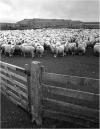Abstract
This paper analyzes the application of the concept of extreme cultural landscape to the island of Tierra del Fuego(Chile). The analytical perspective is based on the concept of cultural landscape, complemented by the notion ofpalimpsest, to which is added the notion of extreme for the case of Tierra del Fuego. For these purposes, its extremenatural landscapes are presented; the navigators, travelers and scientists who explored the island and whose testimonialsform a corpus of narratives and maps, are mentioned; the aboriginal culture of the Selknam, that settledthe island from 11,000 years BC, are described; and the economic colonization, based on the exploitation of naturalresources of the island, is analyzed. In Tierra del Fuego, the works of man and nature have been combined, illustratingthe different ways in which man occupied this territory and altered its geography and climate with productivepurposes, forming extreme cultural landscapes. From these issues arise the management questions and specificchallenges that this territory generates. In order to approach them, at least partially, an applied research in relationshipwith the design of cultural routes for Tierra del Fuego is being developed.Apuntes is registered under a Creative Commons Attribution 4.0 International Public License. Thus, this work may be reproduced, distributed, and publicly shared in digital format, as long as the names of the authors and Pontificia Universidad Javeriana are acknowledged. Others are allowed to quote, adapt, transform, auto-archive, republish, and create based on this material, for any purpose (even commercial ones), provided the authorship is duly acknowledged, a link to the original work is provided, and it is specified if changes have been made. Pontificia Universidad Javeriana does not hold the rights of published works and the authors are solely responsible for the contents of their works; they keep the moral, intellectual, privacy, and publicity rights.
Approving the intervention of the work (review, copy-editing, translation, layout) and the following outreach, are granted through an use license and not through an assignment of rights. This means the journal and Pontificia Universidad Javeriana cannot be held responsible for any ethical malpractice by the authors. As a consequence of the protection granted by the use license, the journal is not required to publish recantations or modify information already published, unless the errata stems from the editorial management process. Publishing contents in this journal does not generate royalties for contributors.


